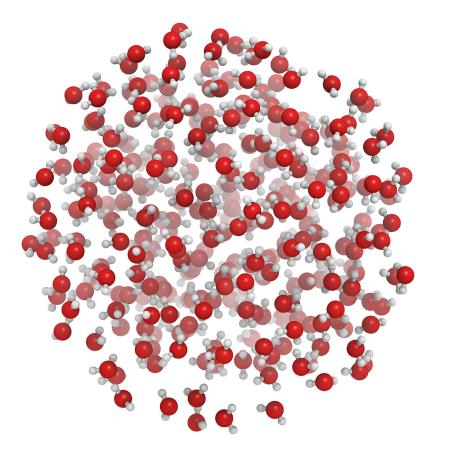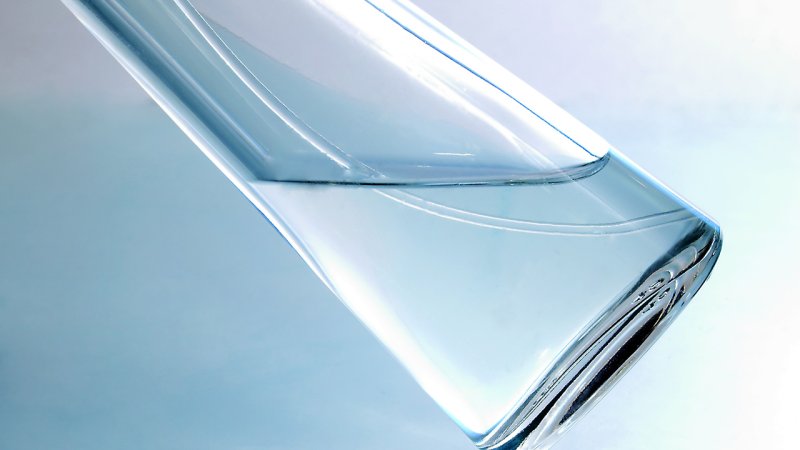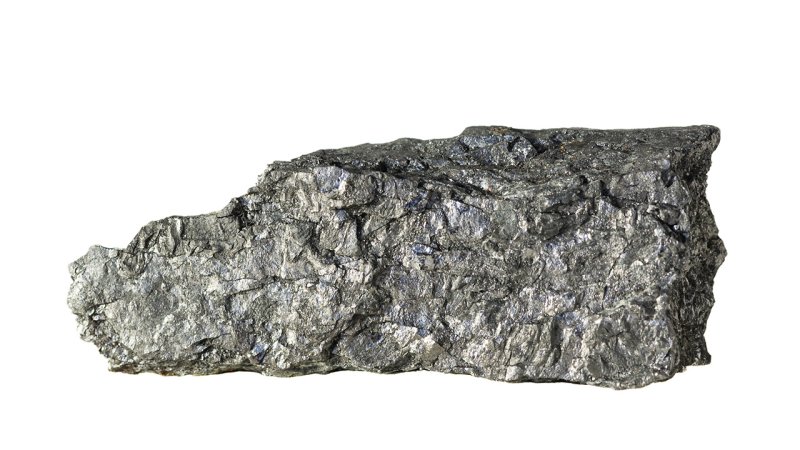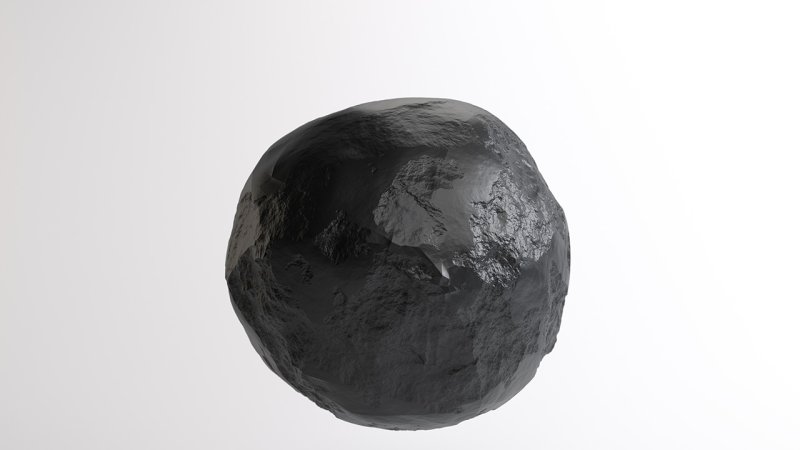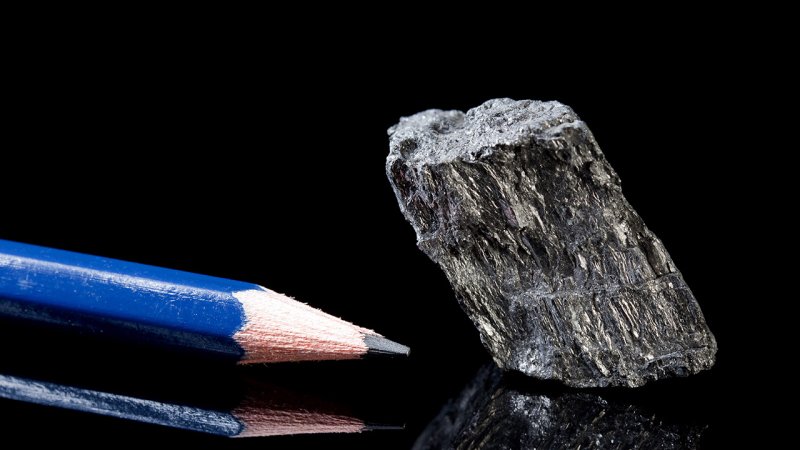
Moderator
3 min read
To increase the chance of a neutron's striking a nucleus of uranium 235U, it is necessary to slow down a fast neutron (energy above 0.1 MeV) to a slow “thermal” neutron (energy around 0.02 eV). During repeated passes near a nuclei, these slow neutrons may be attracted by the strong force and enter the nucleus. Thermal neutrons are much less likely to be captured by a 238U nucleus (more frequently it captures faster neutrons). The presence of a moderator, a substance slowing the neutrons down and thus increasing the number of free neutrons in the reactor core, improves the chance a chain fission reaction to be self-sustaining.
The best way to slow a neutron down is collision with particles of similar size, i.e., protons. Moderators are substances containing a large number of protons, for example, water, heavy water, or graphite.
The term moderator comes from the Latin word “moderare”, meaning to moderate, tame, delay, or decelerate.
3D models of a water molecule. It always contains one oxygen atom and two hydrogen atoms. The heavy water molecule contains deuterium atoms instead of hydrogen atoms.
Water
Water is used as a moderator in the majority of reactors using enriched uranium as a fuel (the concentration of 235U in fuel is between 3.5% and 5.0%). It is readily available, does not require special handling, and can also be used as a coolant.
Heavy Water
A molecule of heavy water contains an atom of deuterium instead of a hydrogen atom. The nucleus of deuterium contains one proton and one neutron. It must be produced, but in comparison to regular water, it absorbs neutrons much less. It is used in reactors fueled with natural or low-enriched uranium.
Graphite
Since graphite also exhibits low neutron absorption, it is suitable for reactors burning natural or low-enriched uranium. Since graphite is a solid, reactors moderated by graphite must use a different medium as coolant. Graphite is combustible in atmospheric air and thus its use in modern types of reactors is being discontinued.
Without Moderator
There are many types of reactors that use fast neutrons for fission and thus do not require any moderator.
An experimental reactor using molten fluoride salts (MSR) may use, apart from graphite, beryllium as a moderator.



